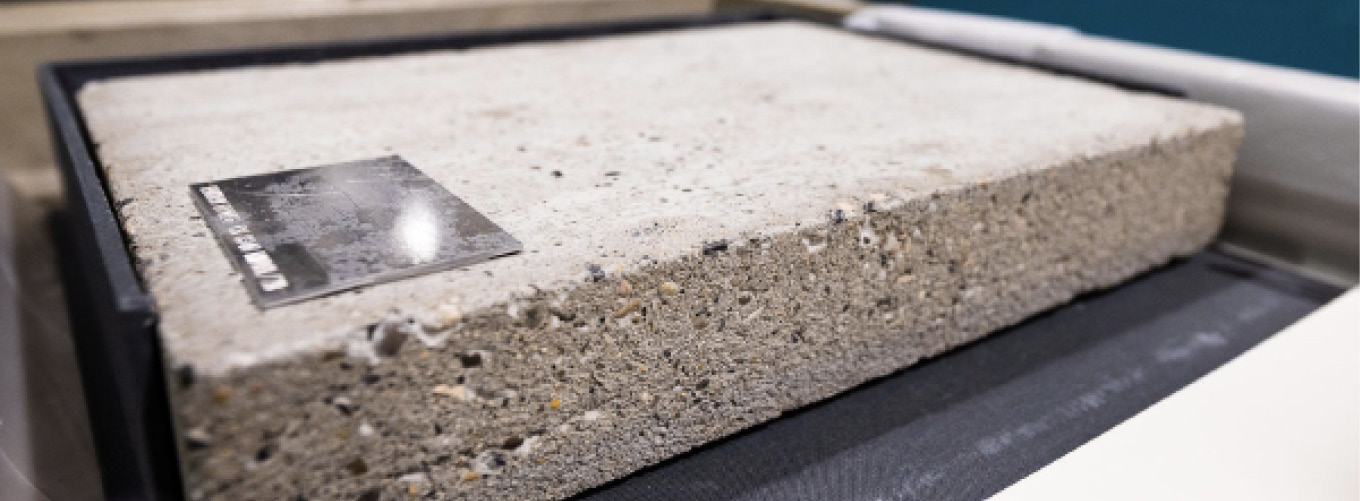Researchers have enlisted the resources of one of the world’s leading X-ray facilities at the U.S. Department of Energy’s (DOE) Argonne National Laboratory in Lemont, Ill. to help discover what lies inside German-born artist Wolf Vostell’s “Concrete Book #83.”
The results of the X-ray scans, which will be published in an unnamed journal, hope to uncover a short book by Vostell on concrete as an artistic medium. The artist, who was part of the Fluxus art movement that flourished in the 1960s and 70s, purportedly encased 100 copies of “Betonierungen” (Concretifications) in numbered slabs of concrete.
Patti Gibbons, the head of collection management at the University of Chicago’s Hanna Holborn Gray Special Collections Research Center teamed up with Maria Kokkori, associate scientist at the Art Institute of Chicago, to finally turn the page on the decades-long mystery after the university purchased “Concrete Book #83” in 2016.
Kokkori uses the book in her classroom, teaching materials science as it relates to art. For her, Vostell’s work represents a turning point in the use of concrete to create art, instead of to construct buildings and bridges.
“Concrete is a material you would see in construction, but not in the art world in the ‘70s,”
Kokkori says. “Construction and art are often considered different fields and disciplines, but Vostell was a pioneer of new technologies to use concrete as an artistic material.”
The pair first tried to peer inside the 20-lb., 2-in. thick concrete slab using ultrasound and X-ray machines at the University of Chicago, but were only able to detect metal wires inside. Next, they turned to the Advanced Photon Source, a DOE Office of Science user facility at Argonne. The APS generates some of the brightest X-ray light in the world, at energies that allow it to penetrate thicker objects. At beamline 6-BM, scientists used a technique called X-ray diffraction to search for signs of paper and vellum inside the concrete.
“First we scanned a different copy of the book itself, the book that is meant to be inside the concrete,” says John Okasinski, Argonne beamline scientist. “This gave us a signature to look for in the object itself. Although the sample is different, the techniques we are using are the same we would use for materials science experiments.”
Kokkori and Gibbons presented details of the experiment as a work in progress at a recent Art Libraries Society of North America conference. Whatever the answers may be, Kokkori says, they would illuminate questions both artistic and scientific. “If Argonne scientists do find a booklet there, how do we contextualize this information?” she asks. “If they don’t, then the answer is equally important, because it provides more context and informs history. It will inform how we share this piece with the public.”
“We have the artist’s testimonial, and no reason to doubt there is something there, but we still need scientific proof,” Kokkori explains. “It’s an important message to students to question the reliability of sources. It’s a great intellectual exercise to question, and then to question the questions.”

